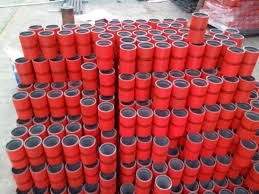- Afrikaans
- Albanian
- Amharic
- Arabic
- Armenian
- Azerbaijani
- Basque
- Belarusian
- Bengali
- Bosnian
- Bulgarian
- Catalan
- Cebuano
- Corsican
- Croatian
- Czech
- Danish
- Dutch
- English
- Esperanto
- Estonian
- Finnish
- French
- Frisian
- Galician
- Georgian
- German
- Greek
- Gujarati
- Haitian Creole
- hausa
- hawaiian
- Hebrew
- Hindi
- Miao
- Hungarian
- Icelandic
- igbo
- Indonesian
- irish
- Italian
- Japanese
- Javanese
- Kannada
- kazakh
- Khmer
- Rwandese
- Korean
- Kurdish
- Kyrgyz
- Lao
- Latin
- Latvian
- Lithuanian
- Luxembourgish
- Macedonian
- Malgashi
- Malay
- Malayalam
- Maltese
- Maori
- Marathi
- Mongolian
- Myanmar
- Nepali
- Norwegian
- Norwegian
- Occitan
- Pashto
- Persian
- Polish
- Portuguese
- Punjabi
- Romanian
- Russian
- Samoan
- Scottish Gaelic
- Serbian
- Sesotho
- Shona
- Sindhi
- Sinhala
- Slovak
- Slovenian
- Somali
- Spanish
- Sundanese
- Swahili
- Swedish
- Tagalog
- Tajik
- Tamil
- Tatar
- Telugu
- Thai
- Turkish
- Turkmen
- Ukrainian
- Urdu
- Uighur
- Uzbek
- Vietnamese
- Welsh
- Bantu
- Yiddish
- Yoruba
- Zulu
Understanding the Concept and Application of Bull Plug in Industrial Settings
Understanding Bull Plug Definition and Applications
In the world of plumbing and fluid dynamics, few components are as critical yet frequently overlooked as the bull plug. This essential device is not only a practical tool but also a crucial part of ensuring systems are efficient and safe. Understanding the definition and applications of the bull plug can illuminate its importance in various contexts.
Definition of Bull Plug
A bull plug is a type of fitting used in piping systems to seal the end of a pipe. Typically made from durable materials such as metal, plastic, or rubber, a bull plug is designed to prevent leakage and maintain pressure within a system. The term bull in bull plug is often linked to the specific design of the plug, which features a tapered end that allows for secure sealing when inserted into a corresponding pipe.
The bull plug serves a straightforward but vital function; it acts as a barrier that keeps fluids confined within a piping system. This characteristic is particularly pivotal in applications where maintaining pressure is crucial, such as in hydraulic systems, water supply lines, and various industrial processes.
Applications of Bull Plugs
Bull plugs are utilized in a myriad of settings, each demanding reliable sealing capacities
. Some of the key applications include1. Hydraulic Systems In hydraulic machinery, bull plugs are used to seal hydraulic lines, ensuring that pressurized fluid does not escape, which could lead to system failures or safety hazards.
2. Water Supply Systems In municipal and residential plumbing, bull plugs can close off unused pipe ends or join points, thereby preventing leaks and maintaining the integrity of the water supply.
bull plug definition

3. Industrial Processes Many industries utilize bull plugs in their piping systems to control the flow of fluids, allowing for maintenance or repair without having to drain an entire system. This feature greatly increases operational efficiency.
4. Oil and Gas Industry Bull plugs are also common in oil and gas applications, where they can seal pipes without risk of leaking hydrocarbons into the environment, thereby ensuring safety and compliance with regulations.
5. Automotive Applications In automotive engineering, bull plugs can be found in cooling systems and fuel lines, where their sealing properties help maintain system integrity under varying temperatures and pressures.
Benefits of Using Bull Plugs
One of the primary benefits of using bull plugs is their reliability. When properly installed, they create a robust seal that prevents leaks and withstands the pressures within a system. This reliability translates to lower maintenance costs and enhanced safety within operations.
Additionally, the material options available for bull plugs—ranging from corrosion-resistant metals to sturdy plastics—allow them to be tailored for specific applications. This versatility makes a bull plug a suitable choice for a wide variety of industries.
Conclusion
In conclusion, while often unrecognized, the bull plug plays an indispensable role in the effectiveness and safety of plumbing and fluid transport systems. By sealing the ends of pipes securely, bull plugs help maintain pressure, prevent leaks, and facilitate efficient operations in diverse applications. As technology evolves and industries demand more robust solutions, the bull plug will continue to be a vital component in various engineering fields, underscoring the importance of understanding such everyday yet crucial mechanisms in our infrastructure.
-
Tubing Pup Joints: Essential Components for Oil and Gas OperationsNewsJul.10,2025
-
Pup Joints: Essential Components for Reliable Drilling OperationsNewsJul.10,2025
-
Pipe Couplings: Connecting Your World EfficientlyNewsJul.10,2025
-
Mastering Oilfield Operations with Quality Tubing and CasingNewsJul.10,2025
-
High-Quality Casing Couplings for Every NeedNewsJul.10,2025
-
Boost Your Drilling Efficiency with Premium Crossover Tools & Seating NipplesNewsJul.10,2025







